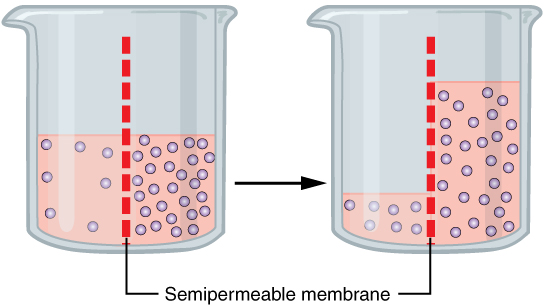

Ribosomes on the rough endoplasmic reticulum are called ‘membrane bound’ and are responsible for the assembly of many proteins. Rough ER is found throughout the cell but the density is higher near the nucleus and the Golgi apparatus. These are called membrane bound ribosomes and are firmly attached to the outer cytosolic side of the ER About 13 million ribosomes are present on the RER in the average liver cell. It is called ‘rough’ endoplasmic reticulum because it is studded on its outer surface (the surface in contact with the cytosol) with ribosomes. This is an extensive organelle composed of greatly convoluted but flattish sealed sacs, which are contiguous with the nuclear membrane. the ER and the Golgi complex, are so close that some chemical products probably pass directly between them instead of being packaged into vesicles (droplets enclosed within a membrane) and transported to them through the cytoplasm The Golgi apparatus is also closely associated with the ER and recent observations suggest that parts of the two organelles, i.e. Part of the ER is contiguous with the nuclear envelope. Cells specialising in the production of proteins will tend to have a larger amount of rough ER whilst cells producing lipids (fats) and steroid hormones will have a greater amount of smooth ER. The two types of ER often appear as if separate, but they are sub-compartments of the same organelle. Both types are present in plant and animal cells. There are two types of endoplasmic reticulum: rough endoplasmic reticulum (rough ER) and smooth endoplasmic reticulum (smooth ER). (courtesy of Chris Hawes, The Research School of Biology & Molecular Sciences, Oxford Brookes University, Oxford, UK) This is an electron microscope image showing part of the rough endoplasmic reticulum in a plant root cell from maize. Many of these products are made for and exported to other organelles. The organelle called ‘endoplasmic reticulum’ occurs in both plants and animals and is a very important manufacturing site for lipids (fats) and many proteins. This statement certainly applies to the endoplasmic reticulum an organelle found in eukaryotic cells.Ībout 50% of the total membrane surface in an animal cell is provided by endoplasmic reticulum (ER). Think of a cell as a “multitude of membranes” we said in an earlier section. To view a micrograph of ER interpreted using the Gridpoint cross-hairs device, click here. It is ‘smooth’ because it is not studded with ribosomes and is associated with smooth slippery fats. Smooth E R (SER) is associated with the production and metabolism of fats and steroid hormones. It is called ‘rough’ because it is studded with ribosomes And of course, there are some animal cells with no vacuoles at all.Rough ER (RER) is involved in some protein production, protein folding, quality control and despatch.

Also the are quite smaller than plant vacuoles and greater in number. So the vacuoles here play a more subordinate role - they still help with endo- and exocytosis. Animal cells do not have a cell wall (they can have a similar thing, called a cell cortex). This a very clever way to push the chloroplasts closer to light and ''promote'' photosynthesis. It also pushes every other cell organelle against the wall and to the surface of the cell.

Generally this central vacuole has a lower pH, witch help digesting substances it can also be used as a storage room - citruses have their juice in these vacuoles it also keeps the cell wall rigid and thus keeps the plant in upright position and so on. The mechanism keeps the plant from wilting and plays a key role in the water balance. This creates hydrostatic pressure - turgor. As mentioned above, the water there pushes the cytoplasm outward against the cell wall. The central vacuole of a plant has a crucial role.


 0 kommentar(er)
0 kommentar(er)
